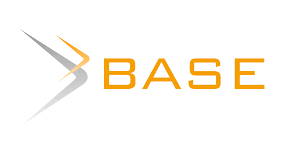Infinite Scrolling Short video dan Brain Rot: Hidden Threats to Emerging Adulthood
Keywords:
short videos, braint rot, emerging adulthood, mental health.Abstract
The development of social media with short video feature and infinite scrolling mechanisms has transformed information consumtion patterns in society, particulary during the emerging adulthood phase. This study aims to explore how short video usage affects mental health and cognitive functioning. The research employed an online survey using a descriptive qualitative approach involving 24 respondents aged 18-29 years. The findings indicate that the majority of respondents spend more than three hours per day scrolling through short videos, leading to consequences such as time distortion, sleeping disturbances, reduced productivity, and a tendency toward proctastination. In addition, participants reported experiencing social pressure, feeling of insecurity, anxiety, and even signs of digital addiction. These conditions are closely related to the phenomenon of braint rot, characterized by decreased motivation and diminished clarity of thought due to continuous exposure to superficial content. This study individuals in emerging adulthood can manage social media use in a healthy, balanced, and minful manner.
Downloads
References
Aisya, B., Oktary, A., Adysti, C., Alya, H., & Jannah, R. (2025). Hubungan Adiksi Media Sosial Tiktok Dengan Tingkat Kesepian Pada Mahasiswa Di Sumatera Barat. Jma), 3(6), 3031–5220.
Akbar, N. A., Aulia, N. F., Kusnanda, R. R. B., & Halida, A. N. (2024). Pengaruh Social Support terhadap Resiliensi Emosional pada Siswa SMP Negeri 26 Surabaya. Jipsi, 6(2), 112–121. https://doi.org/10.37278/jipsi.v6i2.978
Andreassen Cecilie Schou, Pallesen Ståle, & Griffiths Mark D. (2017). Addictive use of social media, narcissism, and self-esteem 1 The relationship between addictive use of social media, narcissism, and self-esteem: Findings from a large national survey. Addictive Behaviors.
Aqillah, Z. J., Andareas Kiser Purba, Defi Syazana Nadhira, Meitia Safitri, Hanifa Azura Nurhamsyah, Khonsa Syahidah, & Nazla Aulia Azzahara. (2025). Hubungan Adiksi Media Sosial TikTok dengan Kualitas Tidur Mahasiswa di Universitas Negeri Padang. CAUSALITA : Journal of Psychology, 3(1), 107–112. https://doi.org/10.62260/causalita.v3i1.481
Aribowo, P., & Bagaskara, M. I. (2025). Dampak Penggunaan Media Sosial “Brain Rot” terhadap Kesehatan Mental Remaja. Jurnal Sosial Teknologi, 5(3), 350–357. https://doi.org/10.59188/jurnalsostech.v5i3.32020
Arnett, J. J. (2000). Emerging adulthood: A view from the new millennium. The Handbook of Adolescent Psychology, 2, 804–811.
Chamila Mile, A., & Febriyona, R. (2023). Hubungan Kontrol Diri Dengan Kecanduan Media Sosial (Tiktok) Pada Remaja Di Smpn 4 Tilamuta The correlation between Self-Control and Social Media Addiction (Tiktok) in Adolescents at SMPN 4 Tilamuta. Jurnal Rumpun Ilmu Kesehatan, 3(1).
Chen, Y., Li, M., Guo, F., & Wang, X. (2023). The effect of short-form video addiction on users’ attention. Behaviour and Information Technology, 42(16), 2893–2910. https://doi.org/10.1080/0144929X.2022.2151512
Chevin Alziqraf, M., Rhea Saurina, N., Safira Maulana, N., & Riau, U. (2024). Dampak Kecanduan Aplikasi Tiktok terhadap Produktivitas dan Pendeknya Rentang Perhatian terhadap Remaja. Jurnal Pendidikan Tambusai, 8(3), 46488–46493.
Choudhary, K. (2025). Brain Rot in the Digital Age: Investigating the Effects of Excessive Screen Time on Cognitive Function in Young Adults. International Journal of Interdisciplinary Approaches in Psychology (IJIAP), 3(5), 2584–0142.
Coyne, S. M., Young, B., Rogers, A. A., Zurcher, J. D., Stockdale, L., Booth, M., Coyne, S. M., Rogers, A. A., Zurcher, J. D., Stockdale, L., Booth, M., Sarah, M., Adam, A., Jessica, D., Coyne, S. M., Rogers, A. A., Zurcher, J. D., Stockdale, L., & Booth, M. (2019). Does time spent using social media impact mental health ?: An eight year longitudinal study and additional Original Publication Citation Computers in Human Behavior longitudinal study. Computers in Human Behavior, 124, 1–9.
Dienlin, T., & Johannes, N. (2020). The impact of digital technology use on adolescent well-being. Dialogues in Clinical Neuroscience, 22(2), 135–142. https://doi.org/10.31887/DCNS.2020.22.2/tdienlin
Festinger, L. (1954). A Theory of Social Comparison Processes. Human Relations, 7(2), 117–140. https://doi.org/10.1177/001872675400700202
Firdaus, A. B., & Nadhiroh, R. (2021). Intensitas Penggunaan Media Sosial Tiktok Terhadap Perilaku Kecanduan Mahasiswa Bimbingan Penyuluhan Islam 2021 Pendahuluan. 1–11.
Forestier, C., de Chanaleilles, M., Boisgontier, M. P., & Chalabaev, A. (2022). From Ego Depletion to Self-Control Fatigue: A Review of Criticisms Along With New Perspectives for the Investigation and Replication of a Multicomponent Phenomenon. Motivation Science, 8(1), 19–32. https://doi.org/10.1037/mot0000262
Gozaly, S. N., Indrijati, H., Psikologi, F., & Timur, J. (n.d.). Tiktok Dan Dinamika Keluarga : Strategi Penurunan S Hort-Form Video Addiction Pada Remaja Indonesia Pendahuluan Internet merupakan bagian penting dalam kehidupan sehari-hari . Internet merupakan sistem jaringan global yang saling menghubungkan pengguna di. 1–15.
Griffiths, M. D., & Kuss, D. J. (2017). Adolescent social media addiction (revisited). Education and Health, 35(3), 49–52.
Harsanto, E., Yunike, & Kusumawaty, I. (2025). Brain Rot and Focus Disorders Survey Impact of Consumption of TikTok and Instagram Reels Content on Teenagers. International Journal Scientific and Profesional (IJ-ChiProf, 4(3), 2829–2618.
L. Rudy Rustandi. (2022). Media Sosial Facebook Sebagai Sarana Berbagi Informasi (Information Sharing) Keagamaan dan Dinamika Sosial Masyarakat di Indonesia. Jurnal SUARGA: Studi Keberagamaan Dan Keberagaman, 1(2), 01–30. https://doi.org/10.24090/suarga.v1i2.7079
Lekatompessy, S. K., Dimala, C. P., & Wulandari, C. R. (2023). Resilience in Emerging Adulthood Viewed from Social Support. Psikoborneo: Jurnal Ilmiah Psikologi, 11(4), 477. https://doi.org/10.30872/psikoborneo.v11i4.12335
Lora, S. K., Purba, S. A., Hossain, B., Oriana, T., Seum, A., & Sharmin, S. (2024). Infinite Scrolling, Finite Satisfaction: Exploring User Behavior and Satisfaction on Social Media in Bangladesh. 1–20.
Maheswari, A. T. P., Parahita, B. N., & Purwanto, D. (2023). Hiperealitas Pada Media Sosial Instagram Dalam Merepresentasikan Relasi Sosial Pertemanan Generasi Z. Jurnal Ilmu Komunikasi UHO : Jurnal Penelitian Kajian Ilmu Komunikasi Dan Informasi, 8(3), 398–415. https://doi.org/10.52423/jikuho.v8i3.84
Montag, C., & Rumpf, H. J. (2021). The Potential of Digital Phenotyping and Mobile Sensing for Psycho-Diagnostics of Internet Use Disorders. Current Addiction Reports, 8(3), 422–430. https://doi.org/10.1007/s40429-021-00376-6
Muzaki, W. (2024). Pengaruh Narsisme , Fear Of Missing Out Dan Kesepian Terhadap Adiksi Media Sosial Oleh : 1445 H / 2024 M Pengaruh Narsisme , Fear Of Missing Out Dan Kesepian Terhadap Adiksi Media Sosial.
Nur Huda. (2024). Fenomena Brainrot Dan Tantangan Pendidikan Islam. Ta’dibi : Jurnal Manajemen Pendidikan Islam, 13(1), 52–83. https://doi.org/10.61088/tadibi.v13i1.800
Oktafia, A., & Zikrinawati, K. (2025). Pengaruh Vidio Pendek terhadap Cyberloafing Pada Mahasiswa. 9, 17088–17094.
Putri, F. O. D. R. (2025). Analisis Dampak Brain Rot terhadap Kemampuan Berpikir Kritis Anak berdasarkan Teori Perkembangan Kognitif Piaget. 4, 1–14.
Raya, I. P., Islam, P. A., Tarbiyah, F., Jl, A., Komplek, G. O., Centere, I., Raya, P., & Tengah, K. (2025). Tiktok Brain : Efek Video Pendek Pada Daya Konsentrasi Mahasiswa Pendidkan Agama Islam IAIN. 2(3).
Rixen, J. O., Meinhardt, L. M., Glöckler, M., Ziegenbein, M. L., Schlothauer, A., Colley, M., Rukzio, E., & Gugenheimer, J. (2023). The Loop and Reasons to Break It: Investigating Infinite Scrolling Behaviour in Social Media Applications and Reasons to Stop. Proceedings of the ACM on Human-Computer Interaction, 7(MHCI). https://doi.org/10.1145/3604275
Satici, S. A., Gocet Tekin, E., Deniz, M. E., & Satici, B. (2023). Doomscrolling Scale: its Association with Personality Traits, Psychological Distress, Social Media Use, and Wellbeing. Applied Research in Quality of Life, 18(2), 833–847. https://doi.org/10.1007/s11482-022-10110-7
Siahaan, K. Z. (2025). Makna Perilaku Sosial Pengguna Instagram Story Mahasiswa FISIPOL UNESA: Fenomenologi dengan Konteks Self-Disclosure. Jurnal Dialektika Pendidikan IPS, 5(1), 69–82.
Syahputri, A., Lusida, N., Studi, P., Masyarakat, K., Masyarakat, F. K., Jakarta, U. M., & Selatan, K. T. (n.d.). Pengaruh Penggunaan Platform Media Sosial Berbasis Short Video Applications ( SVA ) Terhadap Kualitas Hidup Remaja di Wilayah Perkotaan. 05, 150–160.
Tereshchenko, S. Y. (2023). Neurobiological risk factors for problematic social media use as a specific form of Internet addiction: A narrative review. World Journal of Psychiatry, 13(5), 160–173. https://doi.org/10.5498/wjp.v13.i5.160
Tinggi, S., Ekonomi, I., Karya, T., & Pekanbaru, K. (2025). 2044-Article Text-8755-1-10-20250210. 11(1), 22–30.
Urwatulwutsqo, H., Ghifari, M., & Ash, A. (2025). Fenomena Brain Rot Dalam Perspektif Hadis: Analisis Dampaknya Terhadap Moralitas Remaja. Al-Bayan: Jurnal Ilmu Al-Qur’an Dan Hadist, 8(2), 1–18. https://doi.org/10.35132/albayan.v8i2.1305
Woalder, & Mary K. Tripp, PhD, M. (2017). 乳鼠心肌提取 HHS Public Access. Physiology & Behavior, 176(1), 139–148. https://doi.org/10.1177/1359105318763510.Decision
Yulianto, I. A., & Virlia, S. (2023). Pengaruh Social Comparison Dan Adiksi Tiktok Terhadap Self Esteem Pada Remaja. Jurnal Diversita, 9(2), 228–238. https://doi.org/10.31289/diversita.v9i2.9365
Yurliana, Saleh, R., & Azman, Z. (2022). Penggunaan Aplikasi Tiktok Sebagai Wujud Aktualisasi Diri Didunia Maya (Studi Pada Pengguna Aplikasi Tiktok Di Kota Banda Aceh). Jurnal Ilmiah Mahasiswa FISIP USK, 7(1), 1–12.
Zhang, Y., Bu, R., & Li, X. (2024). Social Exclusion and Short Video Addiction: The Mediating Role of Boredom and Self-Control. Psychology research and behavior management, 17, 2195–2203. https://doi.org/10.2147/PRBM.S463240. (n.d.). No Title.
Zhang, Y., & Tan, Y. (2023). The effect of short-form video addiction on undergraduates ’ academic procrastination : a moderated mediation model. December, 1–10. https://doi.org/10.3389/fpsyg.2023.1298361

















